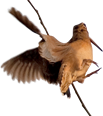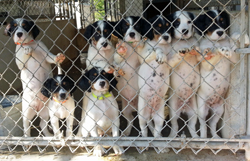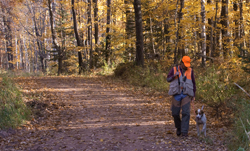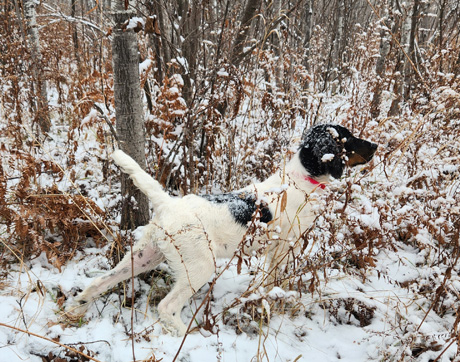A good year for our puppy quail training program
Sometime in late summer, it became clear to me that several things would come together to provide a perfect November bobwhite quail training session for puppies.
Two litters whelped in July would be four months old—a prime age to introduce them to birds. The quail in my four johnny houses that I’d been acclimating and conditioning would be wild-acting, hard-flying birds. My guiding responsibilities would be done and, hopefully, the weather would cooperate. Talk about serendipity.
Many clients were keen and signed up. With the puppies Betsy and I kept from those two litters, I had 11 puppies.
The adage is “It takes birds to make a bird dog.” More specifically and for me, it takes wild birds to make a wild bird dog. For the same reason beginning baseball players start with a ball on a tee, we can’t expect a 12-week-old puppy to handle wild birds—the equivalent of a major league pitch.
The Quail
Our ball on a tee for young puppies is quail from a johnny house. Our birds aren’t the standard quail—caught, handled and buried in the grass. Our birds are never touched; they run and fly almost like wild birds. It takes time, effort and specific habitat to get the quail to act wild, but that’s crucial to prepare young dogs to learn to hunt wild birds.
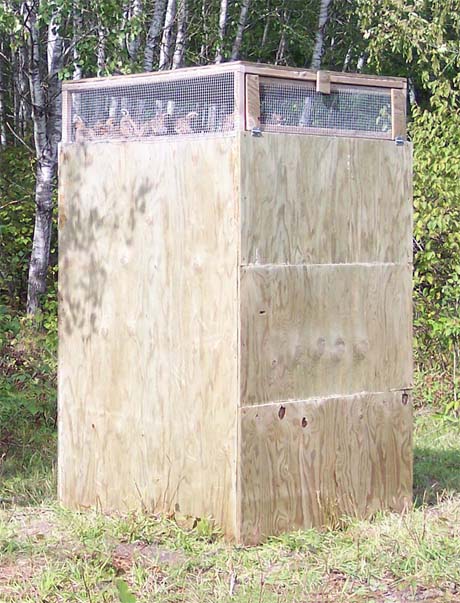
Quail sun themselves on the perches of the johnny house. Birds are released through the hinged door the swings open.
The Johnny House
A johnny house is a quail pen that, well, resembles an old outhouse. Ours are 4’ by 4’ square and 6’ high. All four walls are made from green-treated plywood except for the top six inches which is covered with ½ inch hardware cloth. The roof is either treated plywood or corrugated metal. The floor is made of ½ inch hardware cloth. There are perches just below the top six inches of hardware cloth where the birds fly to sun themselves.
An entry door is on one side with a feeder and nipple waterer attached to the inside of the door. Near the bottom of the door on the outside is an entry funnel for the quail to use to get back into the house.
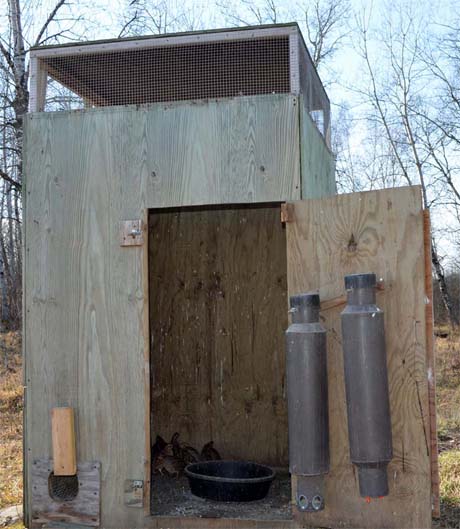
Inside the door of a johnny house a feeder and nipple waterer are mounted. On the floor inside is a dusting pan. On the bottom left is the entry funnel.
How the Quail Act
At the beginning, most of the quail fly to the same areas near the house which makes it easier for the pups to find them. Then as the puppies learn to find, point and flush them, the quail run more, flush wilder, fly farther and become more difficult to find. Sometimes, with a dozen quail flushed out of the house, a group of puppies might find very few. But that’s ok. Wild birds are hard to find and the sooner the puppies learn they have to hunt hard to find them, the better.
Really good quail will flush strongly out of the house, flying up and over the trees for 100 yards or more. After a scattered landing, they will quickly gather together leaving foot scent for the young dogs to figure out. Once just one pup finds them, the quail react as a covey, giving the pup only one contact but that one contact will be wild-like.
At times, quail might not come back to the house for a day or more. And at times, I found some coveys more than 300 yards from their johnny house. When flushed, the birds flew another 150 yards in the opposite direction, and yet, they were back in the house the next day.
When to Start the Puppies
Young puppies’ brains are like sponges. Too, they are bold, curious and adventurous. But they lack the physical ability to run far or fast and so stay close to the handler. Like other stages in their development, there is a short window of opportunity.
I’ve found that starting puppies on johnny house quail by 12 weeks of age brings the best results. I work puppies in groups of two or three where they learn not only to hunt, find and point quail but also to read their bracemates which can lead to good things like backing. Often I’ve had several 14-week-old puppies backing another puppy that is pointing a quail.
In addition, puppies worked in groups become accustomed to distractions while hunting and are less likely to be competitive with bracemates in the field. Two or three months of this work, threes time a week is about enough. After that the window starts to close; puppies are stronger, start to hunt wider and are more independent in their search.
The johnny house quail have done their job and the pups are ready for the next stages of advanced training and wild birds.

